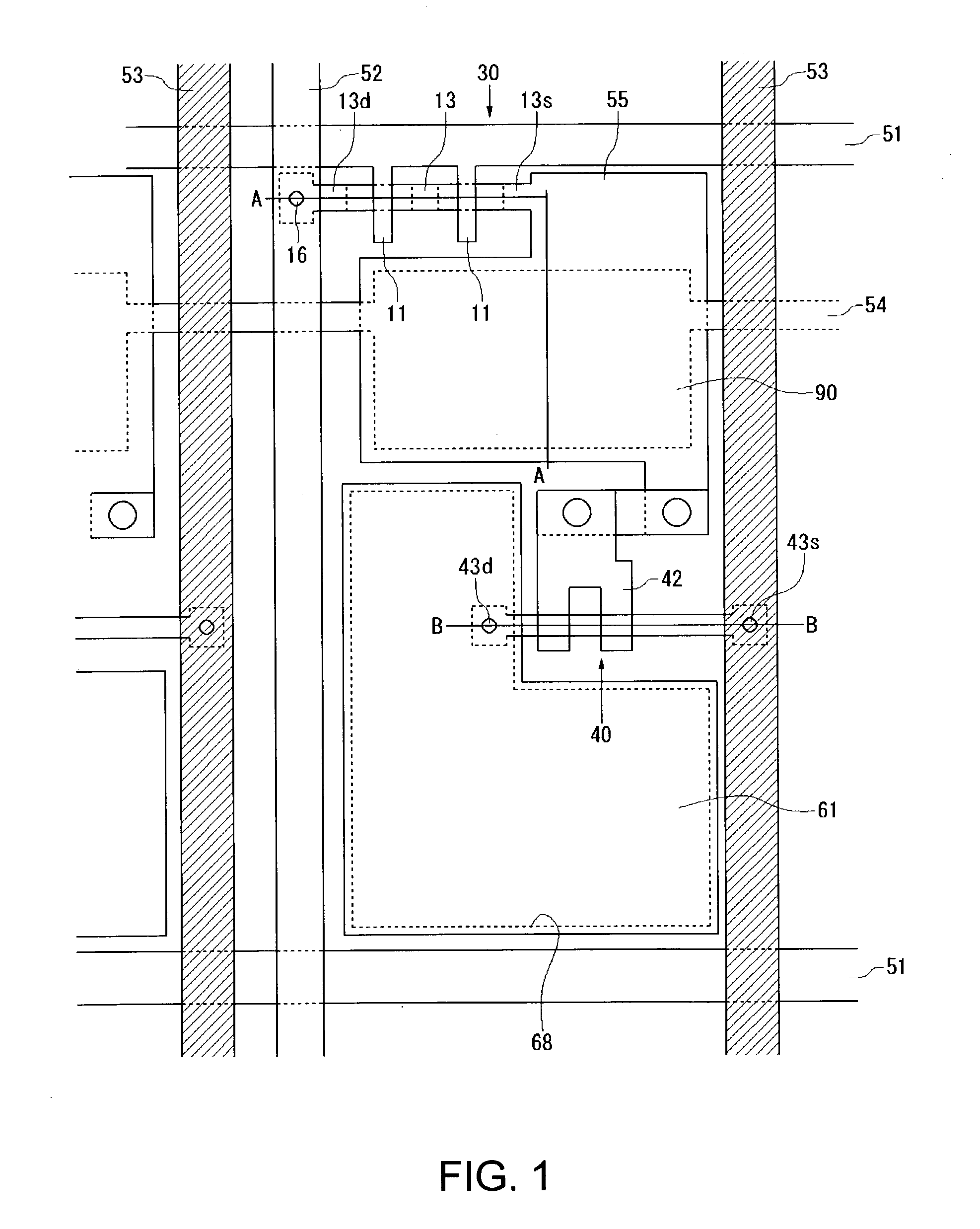Optical element and manufacturing method therefor
a manufacturing method and technology for optical elements, applied in the field of optical elements, can solve the problems of deterioration of optical elements with time, variation in luminance, and inability to achieve the effect of extending the life of the element, reducing the resistance of the cathode, and low resistivity
- Summary
- Abstract
- Description
- Claims
- Application Information
AI Technical Summary
Benefits of technology
Problems solved by technology
Method used
Image
Examples
Embodiment Construction
[0054] An example of method of forming of the cathode 67 will be described hereinbelow.
[0055] A substrate with an electron transport layer 65 formed thereon was introduced into a chamber, where the ambience was brought into a reduced pressure of 5.times.10.sup.-5 Pa by a load-lock type cryopump. In this low pressure ambience, lithium fluoride was vapor-deposited in a 1 nm-thick film on the electron transport layer 65. While maintaining this reduced pressure condition, aluminum was vapor-deposited into a 400 nm thickness on the lithium fluoride film at 30.degree. C. The aluminum used was of high purity (99.9% or above).
[0056] Thereafter, the substrate was heat-treated at 80.degree. C. for 60 minutes without being exposed to atmospheric air. This step is a preprocessing for the sealing, with metal or glass, of a cathode side of the entire organic EL display together with desiccant after the formation of the cathode.
[0057] The thickness of the lithium fluoride film can be achieved in t...
PUM
| Property | Measurement | Unit |
|---|---|---|
| thickness | aaaaa | aaaaa |
| temperature | aaaaa | aaaaa |
| work function | aaaaa | aaaaa |
Abstract
Description
Claims
Application Information
 Login to View More
Login to View More - R&D
- Intellectual Property
- Life Sciences
- Materials
- Tech Scout
- Unparalleled Data Quality
- Higher Quality Content
- 60% Fewer Hallucinations
Browse by: Latest US Patents, China's latest patents, Technical Efficacy Thesaurus, Application Domain, Technology Topic, Popular Technical Reports.
© 2025 PatSnap. All rights reserved.Legal|Privacy policy|Modern Slavery Act Transparency Statement|Sitemap|About US| Contact US: help@patsnap.com



